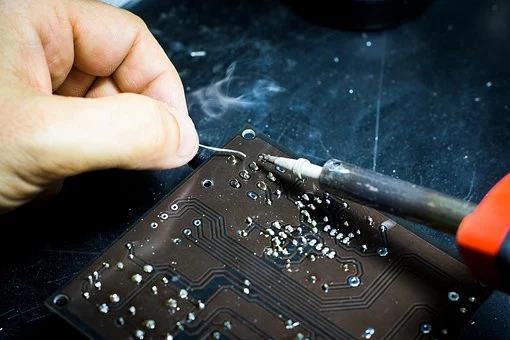
At a manufacturing level, several industries are focusing on reducing costs, e-waste, and production times. The only way for manufacturing industries to achieve these goals is to ensure that electronic products? components are easily reworkable and can be quickly repaired. PCBs and solder component failures drive the need to replace appliances and electronic products. Hence, this drive towards more repairable and reworkable components starts with more investments in efficient PCB reworks and repairs. Instead of scrapping and disposing of devices every time devices fail, manufacturers need experts who can rework, re-solder, and repair components quickly.
Understanding Repairing and Reworking
In the PCB industry, the terms? repair? and ?rework? are often thrown around interchangeably when in truth, both those terms signify completely two different concepts.
- Rework: Reworking is the process of altering components in electronic devices and appliances, especially printed circuit boards (PCBs). In some cases, full electronic devices can also be reworked. But in general, reworking is the process of swapping defective or spoiled components on PCBs at manufacturing sites before the products are sent to market.
- Repair: Repairing PCBs or electronic devices generally refers to the process of fixing components in electronic devices after they have been sold.
For manufacturers, both of these processes are set to be vital in the future. Their products need to be easy to rework, and repair and here?s why.
What is the Right to Repair?
The three words, ?Right to Repair? sent shockwaves in the electronics industry when the European Union (EU) announced that by?2021, manufacturing of all household appliances would fall under new regulations. These ?Right to Repair? regulations are expected to have far-reaching impacts on manufacturing processes worldwide.??
However, this isn?t the first time the ?right to repair? movement has gained traction. In the US, the ?right to repair? movement started with the 2012 Motor Vehicle Owners? Right to Repair Act. This act was passed in Massachusetts, and in seven years (2019), twenty other US states have expressed their desire to implement similar legislation.
Although many OEMs are lobbying legislators to stop these laws, the rising e-waste problem is gaining popularity. Soon enough, consumers will start focusing on appliances that are easy to repair.
What is the EU?s Right to Repair Act, and how does it impact PCB industry professionals worldwide? Here?s a quick guide
- 2021 – From 2021, all electronics manufacturers in the EU will have to make their products easily repairable. They?re also required to provide or recommend common tools and offer spare parts to customers for at least ten years after they sell their last units.
- Who is it Affecting ? The manufacturers of major appliances like ? dishwashers, washing machines, lighting, and refrigerators will face the first wave of these regulations. Manufacturers of consumer electronics like mobile phones, TVs, and computers are expected to follow.
- The Main Goal ? Ushering reparability. Gone are the days when small errors in PCBs meant that manufacturers take the product off the supply cycle. The ?Right to Repair? movement has always been focused on ushering in new generations of easily reparable products. Of course, legislators need to educate customers first as manufacturing companies can?t make major changes to their manufacturing processes overnight. However, more businesses will have to rethink the lifespans of certain components, especially PCBs.
- Impact on the Rest of the World – Some European and American corporations have already started changing the way they approach PCB repairs and reworks. How these companies fare will provide vital insights for other manufacturers across the world. Not many companies have the in-house capacities to rework PCBs quickly, correctly, and reliably. So, the ones that partner with the most efficient providers of PCB Rework and Repairwill be better positioned to tackle these changes.
The Need for More Emphasis on Rework
Putting aside increasingly trying legislative landscapes, manufacturers also need to emphasize PCB reworks because the sleeping giant, i.e., the electronics consumers, are waking up to the fact that components that are easily reworkable are also more sustainable. If manufacturers have reliable PCB rework experts at their disposal, they can save costs on materials, reduce scrappage expenses, and achieve higher profitability levels across their product lines.
More importantly, investing in PCB rework services means investing in their brand reputations for manufacturing companies. More PCB reworks means less creation of e-waste. The European consumer market has become aware of this link because of the EU?s ?Right to Repair? initiative. In 2020, 8.16 million German consumers said they?re willing to spend more on environmentally friendly products.
Before other electronics consumers discover this link, manufacturing companies must realize that PCB rework will always be a central part of their business models. PCB reworks are highly unpredictable and difficult processes. But, efficient PCB rework services can also massively boost profitability for companies. So, it?s high-time companies start investing in IPC-certified masters of PCB rework and repair processes who can provide fast and reliable services!

As the editor of the blog, She curate insightful content that sparks curiosity and fosters learning. With a passion for storytelling and a keen eye for detail, she strive to bring diverse perspectives and engaging narratives to readers, ensuring every piece informs, inspires, and enriches.









